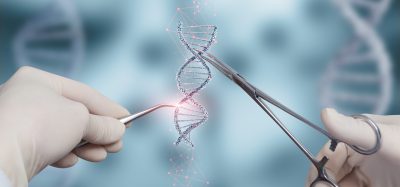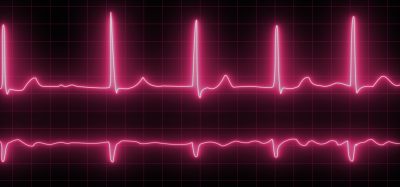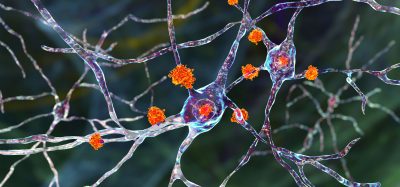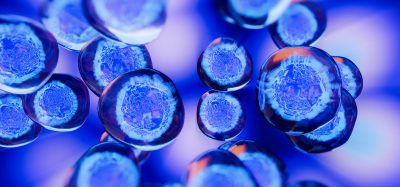Research suggests ion channel blocking drugs could be used in cancer therapy
Posted: 12 August 2015 | Author: Katie Sadler, Digital Content Producer, Drug Target Review
Research carried out by University of California San Francisco (UCSF) has revealed ion channel blocking drugs could play a part in cancer therapy. The common class of channel blocking drugs, which are used to treat cardiac, neurological, and psychiatric disorders, could prove to be beneficial in cancer treatment according to research findings in fruit flies […]


Research carried out by University of California San Francisco (UCSF) has revealed ion channel blocking drugs could play a part in cancer therapy.
The common class of channel blocking drugs, which are used to treat cardiac, neurological, and psychiatric disorders, could prove to be beneficial in cancer treatment according to research findings in fruit flies and mice that led to treatment of metastatic brain cancer.
Ion channels, proteins that form pores in cell membranes, play central roles in organs in which conduction of electrical signals is vital, such as the brain and heart, but they are found in cells throughout the body. Although about 20 percent of FDA-approved medications target ion channels – these proteins are considered especially “druggable” because of their location at the cell surface – no channel blockers have been approved for cancer treatment.
However, according to Nature Neuroscience as stated by UCSF, a drug that blocks channels that allow potassium ions to move out of cells was effective in slowing the growth of medulloblastoma, a type of brain cancer that had metastasised to the bones of the pelvis in a young patient. The drug in question, thioridazine, was originally developed to treat psychosis, but is now rarely used due to significant side effects.
“We showed that blocking a specific ion channel in medulloblastoma can impede tumour cells from proliferating and spreading,” said Lily Jan, PhD, a Howard Hughes Medical Institute (HHMI) investigator and professor of physiology at UCSF, and a senior scientist on the research team. “The development of a drug designed to act on this newly identified target more specifically and more powerfully, with fewer side effects, would have the potential to improve outcomes for many with this disease, which is a common cause of death in children.”
The unusual treatment had its roots in research that begun about five years ago by former UCSF postdoctoral fellows Xi Huang, PhD and Ye He, PhD.
In the Jan laboratory, Huang found that a subset of human medulloblastomas has a high abundance of an ion channel known as EAG2, which is the mammalian version of a fruit fly channel called ether-a-go-go. Initially found to be important for nervous system function in the 1960s, the fruit fly channel was given its whimsical name in keeping with that era, after scientists observed that mutations affecting the channel cause flies to do a dance-like twitching when exposed to ether.
He, then joined the study, using fruit flies genetically manipulated to serve as models for brain tumours. Huang and He worked together to show that the fly channel protein, like the human protein, promotes brain tumour growth and metastasis.
The UCSF team collaborated with scientists at the Hospital for Sick Children and the University of Toronto to show that both the fruit fly version of EAG2 and human EAG2 act in concert with another ion channel, called KCNT2, to promote tumour growth.
Huang also discovered that changes in EAG2 abundance at the trailing edge of migrating tumour cells alter cell volume and shape, and enable tumour cells to more easily move and spread. When he transplanted EAG2-producing human medulloblastoma tissue into mice, he found that thioridazine inhibited tumour growth and metastasis. Huang’s presentations of this work at campus seminars led to the team’s collaborations with medical colleagues and, eventually, to treatment of the patient at UCSF Medical Centre.
Surgery, radiation, and chemotherapy, as well as experimental treatments, were no longer effective in arresting growth of widespread metastases in the patient, who had been originally diagnosed with medulloblastoma as a teenager. But after thioridazine treatment, UCSF physicians, including paediatric oncologist Sabine Mueller, MD, PhD, of the Helen Diller Family Comprehensive Centre, observed shrinkage of an EAG2-expressing metastatic tumour in the patient’s pelvis. The patient could not tolerate thioridazine’s side effects, however, and he succumbed to the disease several months after ending a two-month course of the drug.
While the UCSF study is the first to demonstrate the potential impact of targeting ion channels in a patient with medulloblastoma, previous studies of other types of cancer cells suggest that similar ion channels, including a potassium channel known as EAG1, might also be promising targets for new cancer therapies.
“Targeting of ion channels in cancer is a new frontier, and will be exciting to further explore as a way both to stop the growth of tumours and to limit their potential to spread,” Jan said.
Related topics
Gene Therapy, Ion Channels
Related conditions
Heart disease
Related organisations
California University, Cancer Research








